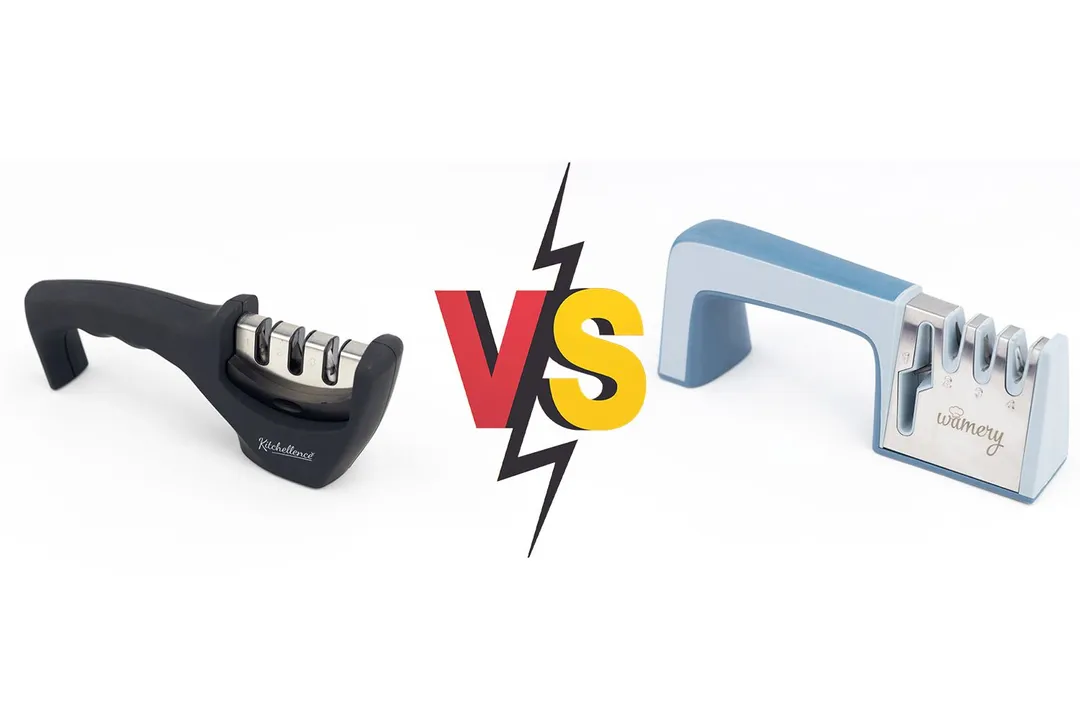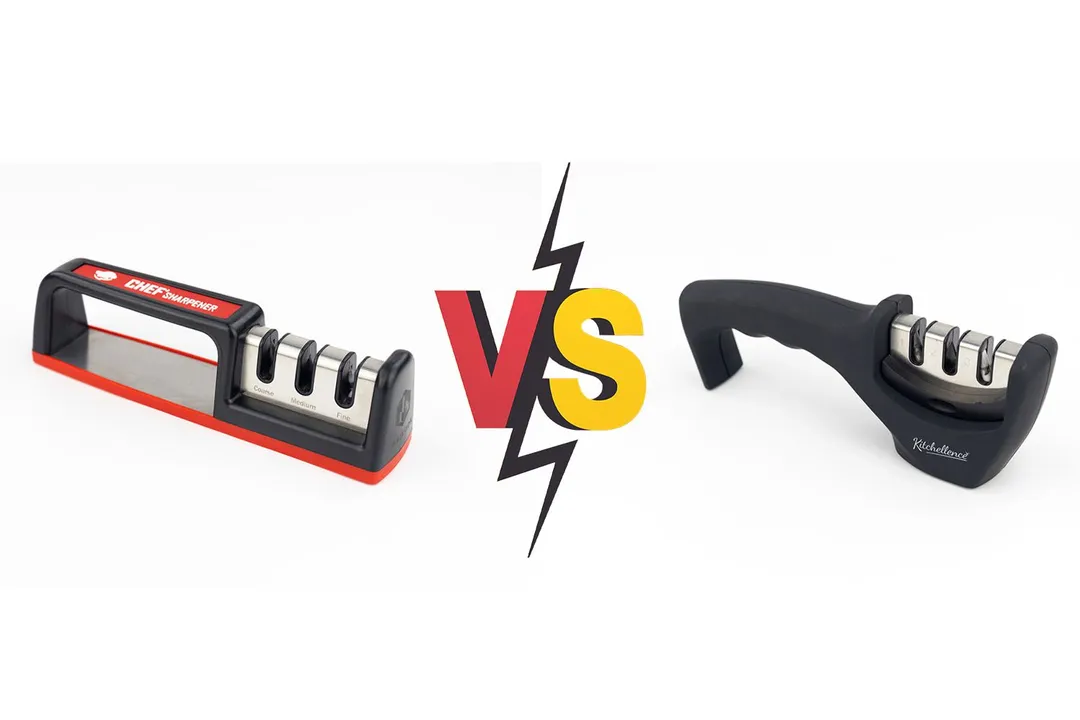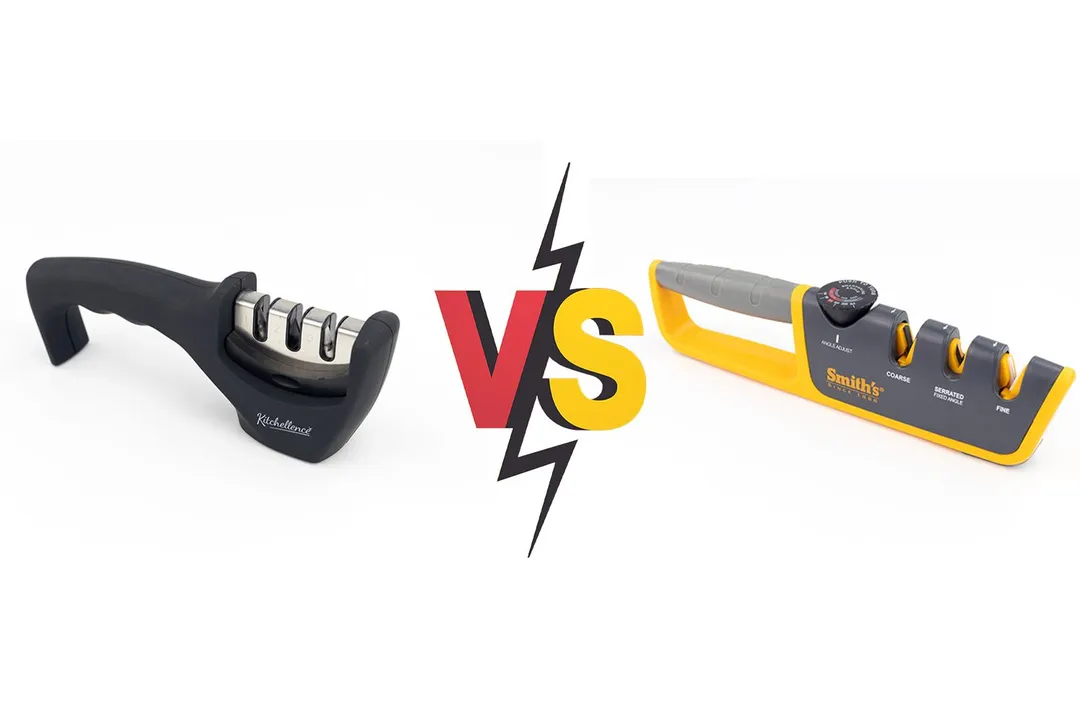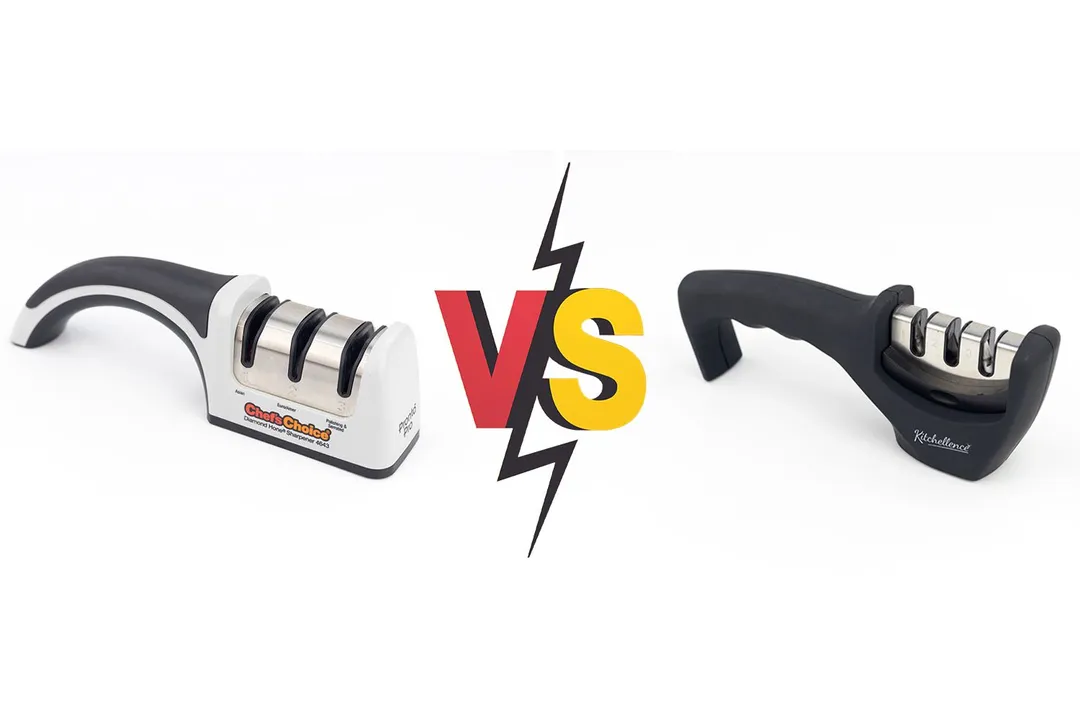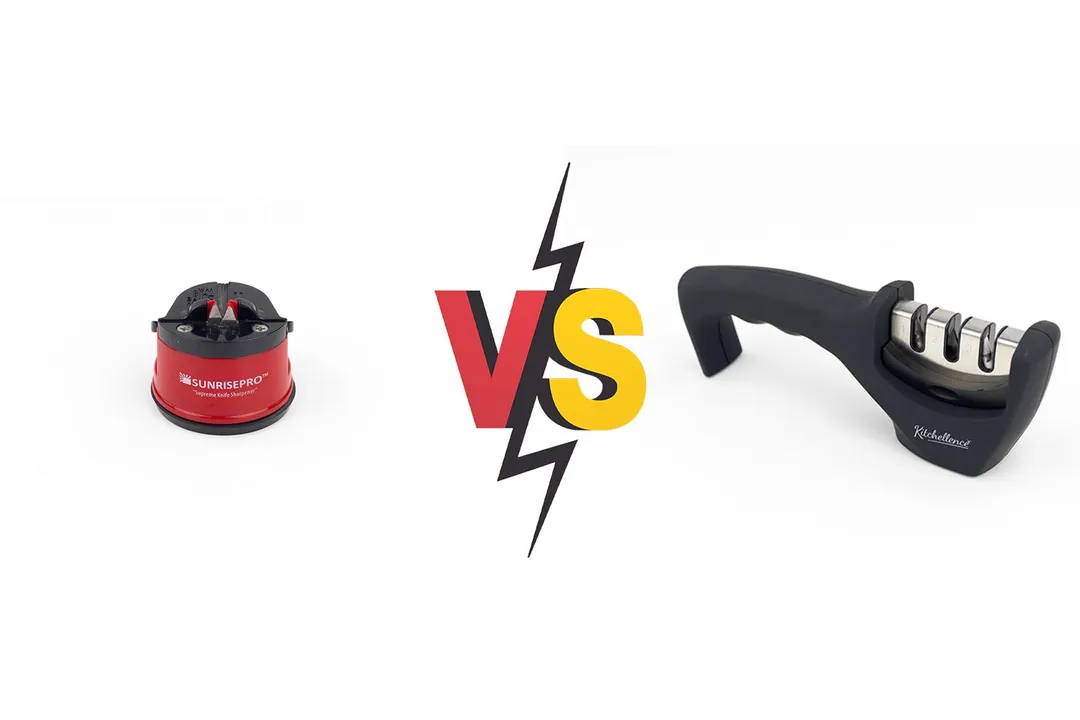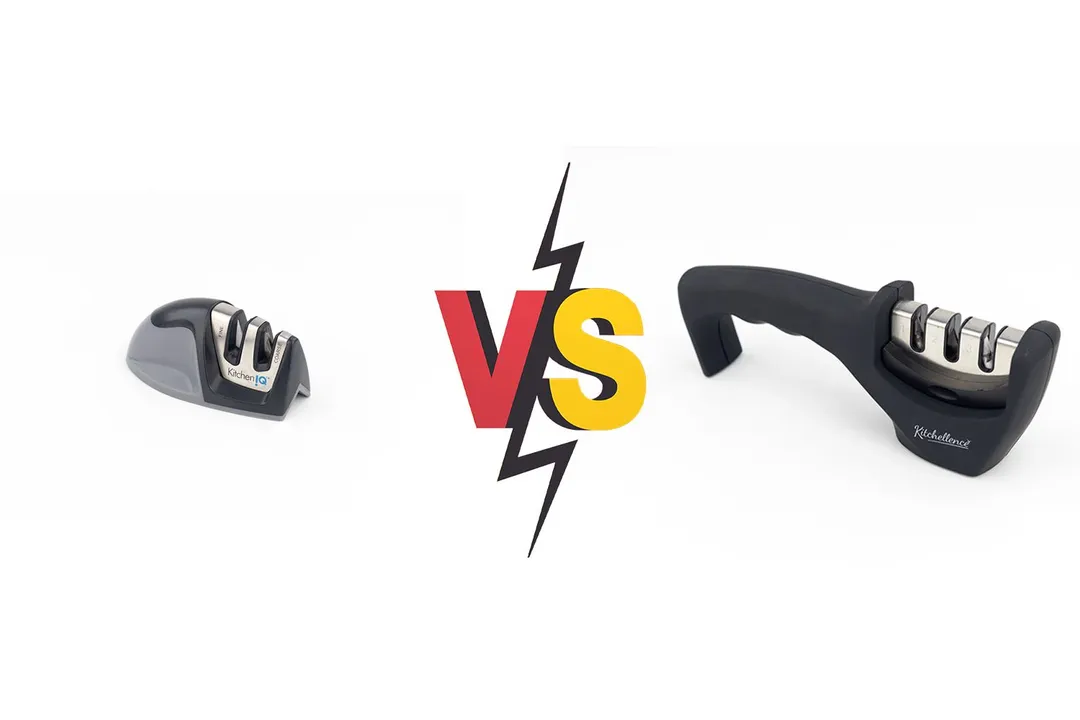Our recommendations are made independently through Research & Testing. We may receive commissions from purchases made via our links.
Kitchellence 3-Stage vs Mueller 4-Stage Sharpener Side-by-Side Comparison
Check how the Kitchellence 3-stage and the Mueller 4-stage sharpener stack up in speed, sharpness, material retention, and other parameters.
Kitchellence 3-Stage
Tested Using Methodology v1.1Mueller 4-Stage
Tested Using Methodology v1.1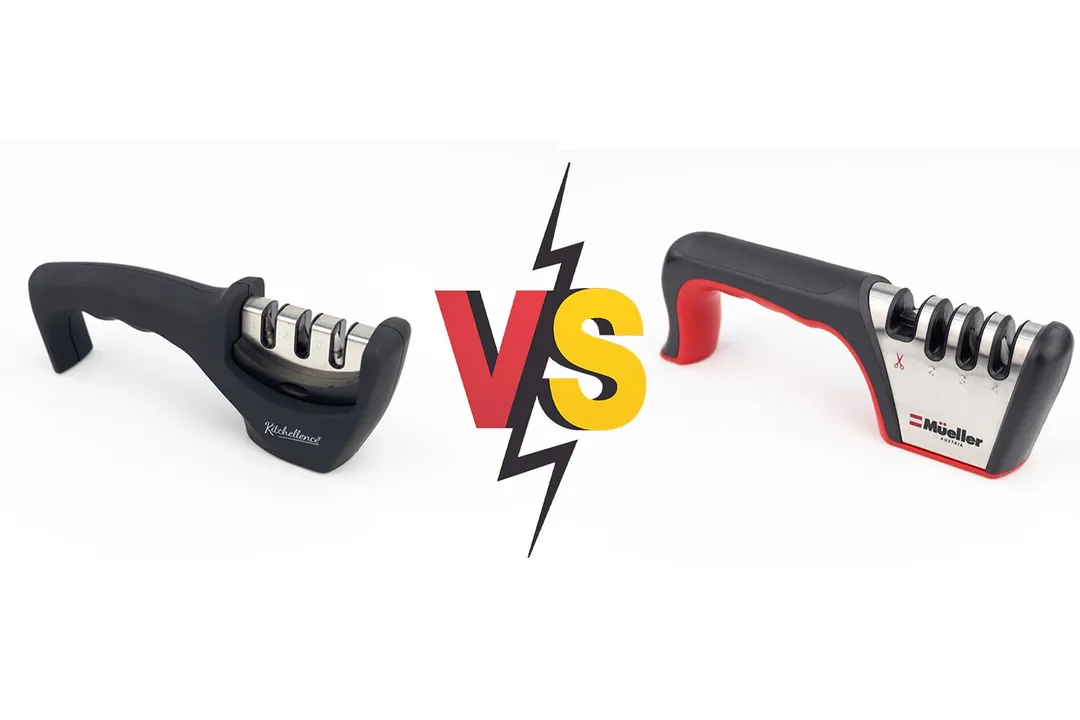
Overall Verdict
The Kitchellence 3-stage and the Mueller 4-stage sharpeners are well-built devices. The former has a solid construction with a nice finish while the latter has a sizable body with an extra slot for shears and scissors.
Both would benefit from a lower working section, though the Kitchellence does better in terms of balance, thanks to a metal plate near the base that adds weight and stabilizes it.
The Mueller can sharpen faster and to a higher level of sharpness. The Kitchellence, on the other hand, is much gentler to the edge.
Your choice between the two thus comes down to what your priority is: If you don't mind spending more time to get a smoother edge, get the Kitchellence. If speed is important, go with the Mueller.
Pros & Cons
- Easy to use, intuitive design
- Soft, comfortable finish
- Extra weight near the base for stability
- Affordable price
- Included glove for added safety
- Strong construction, pretty coloring
- Quick sharpening
- Scissor slot
- Ease of use
- Tapered base
- Awkward base pad
- High center of gravity
- Harsh on the knife edge
Key Specs
Where to Buy
*You help support HealthyKitchen101's product testing and reviews by purchasing from our retail partners.
Analysis and Test Results
Performance
Sharpening Time to Cut a Lemon
Material Retention
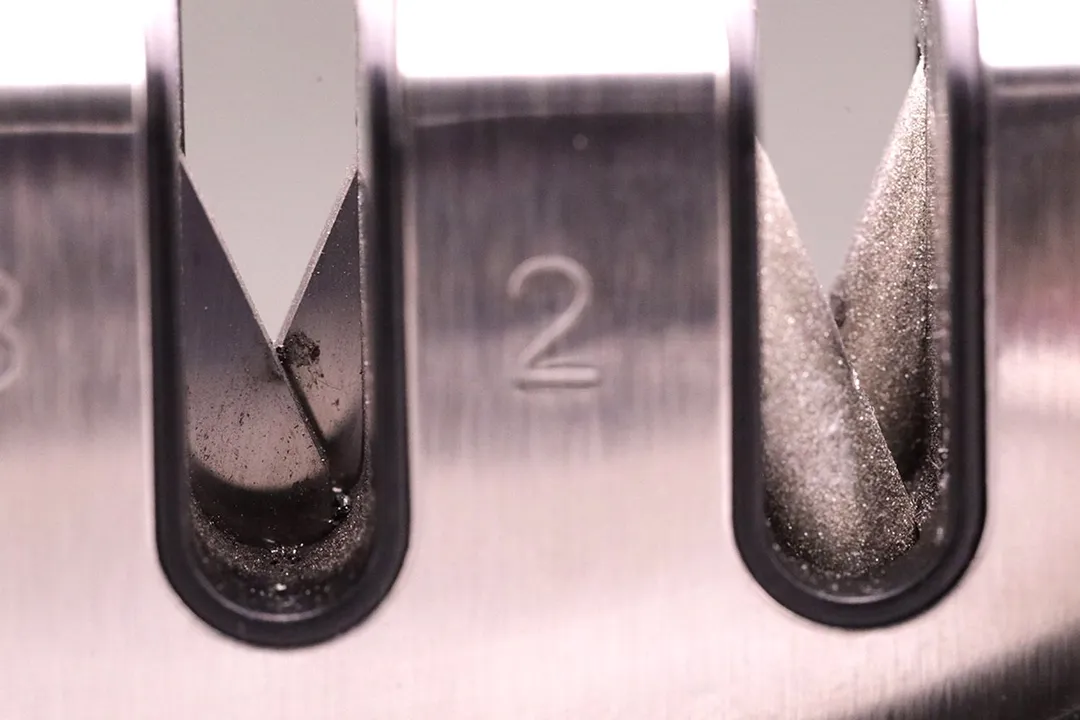

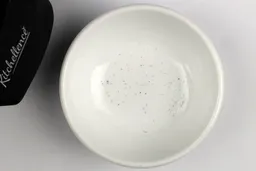
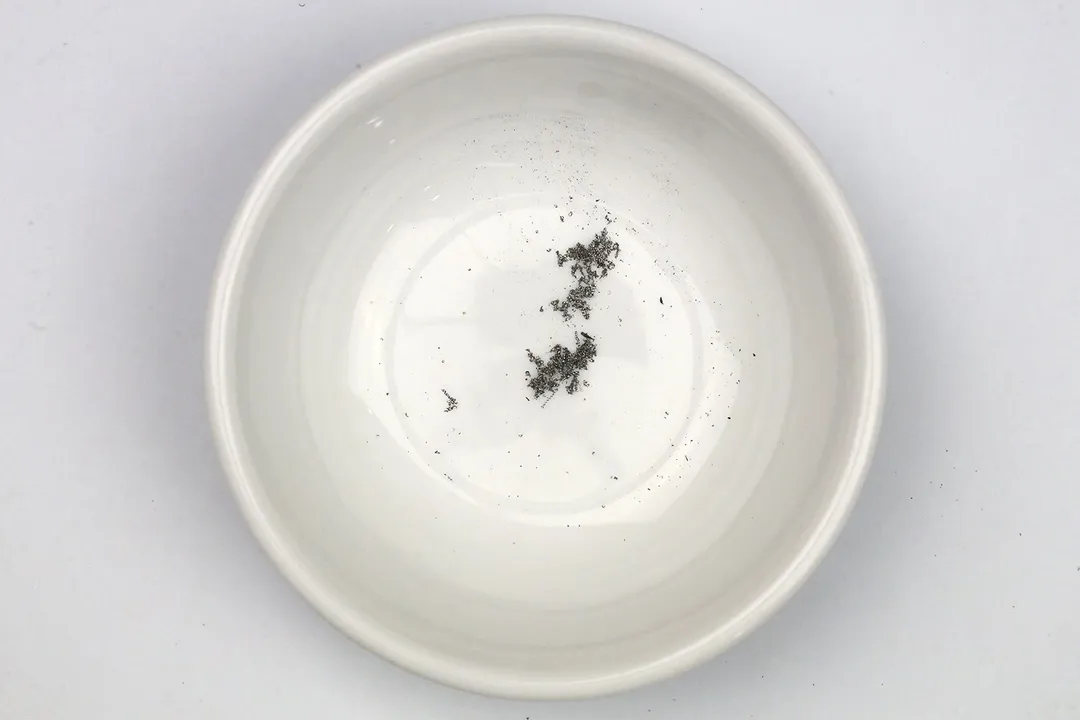

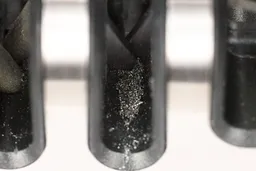
Maximum Sharpness Achieved
Edge Smoothness
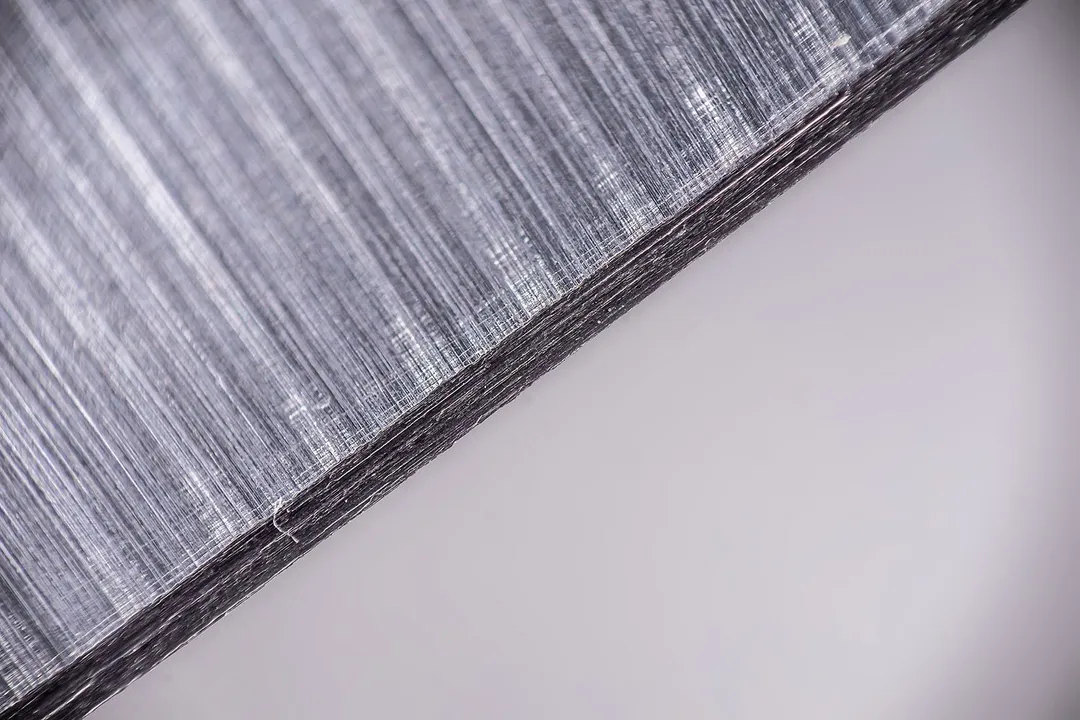
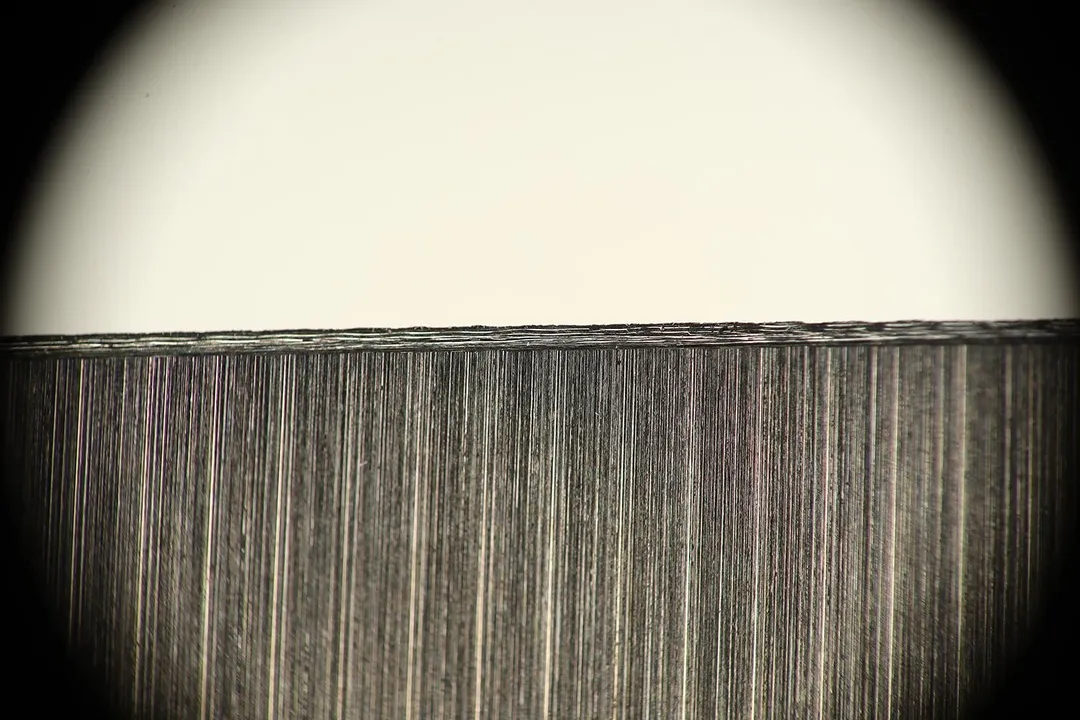
Design
In the Box
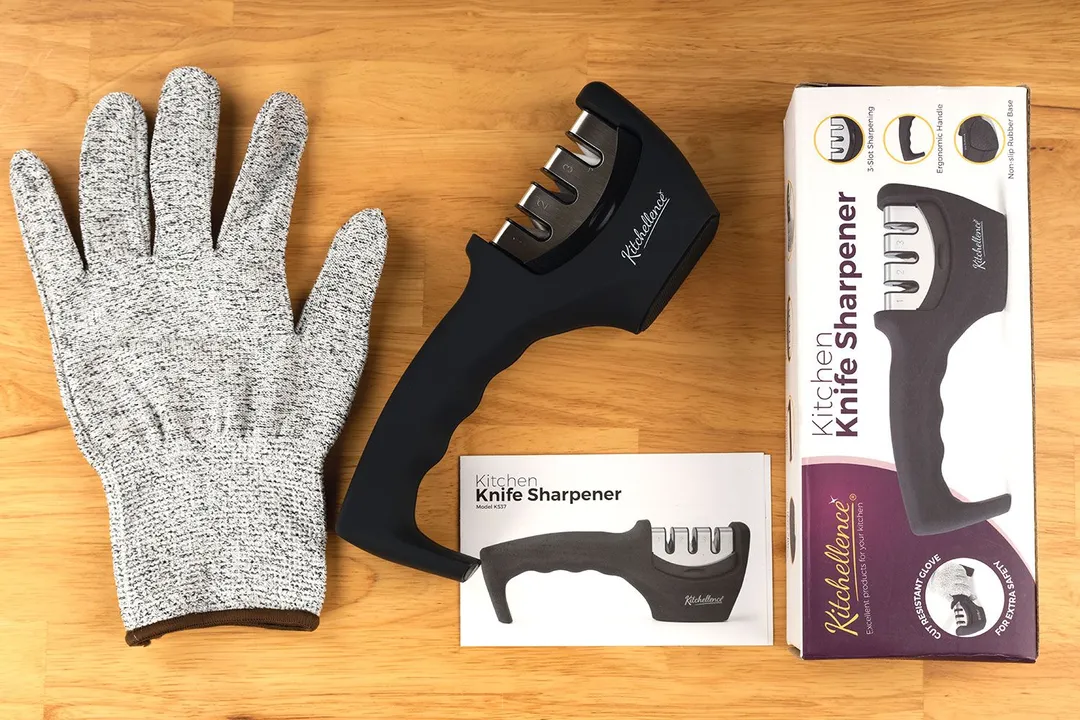
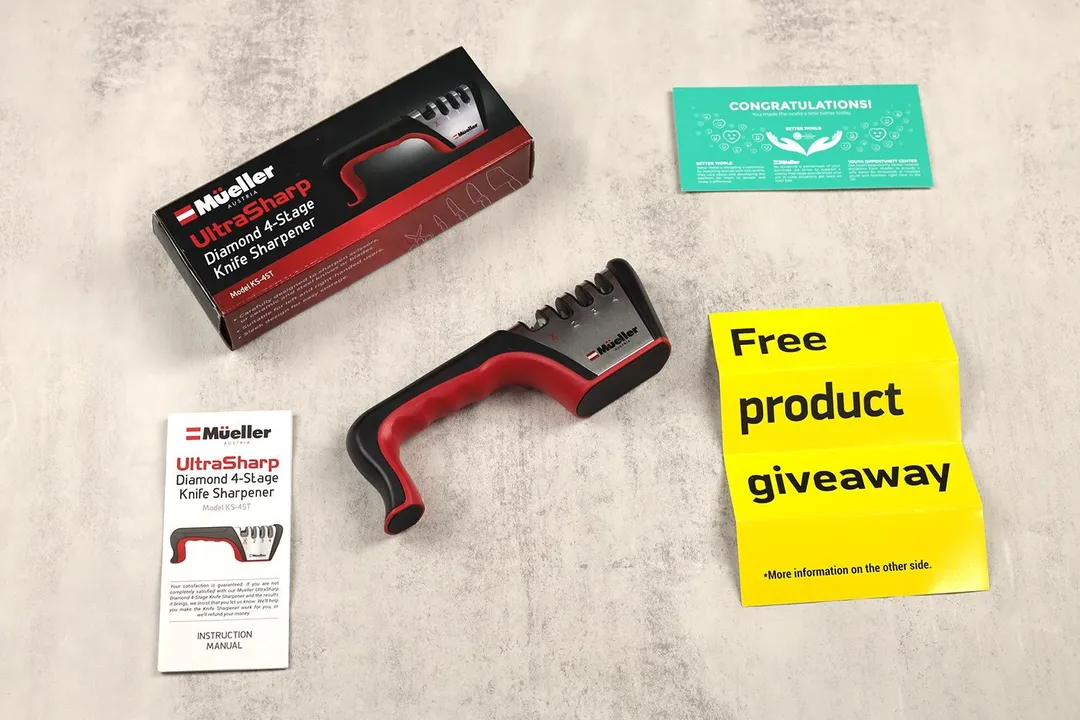
Dimensions
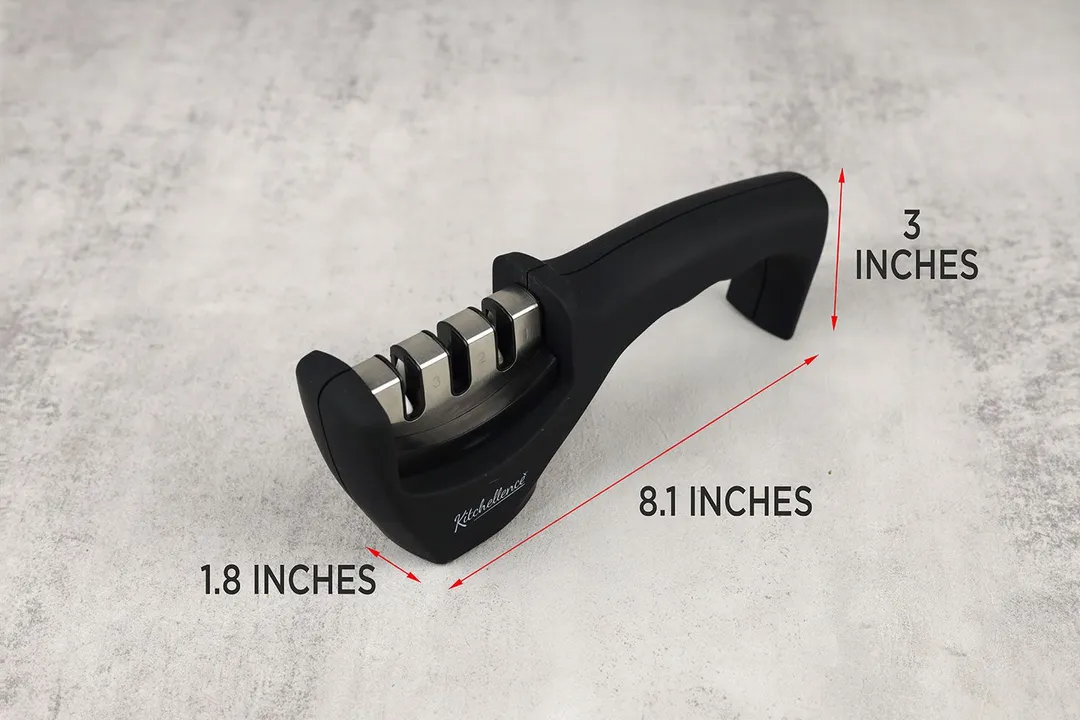
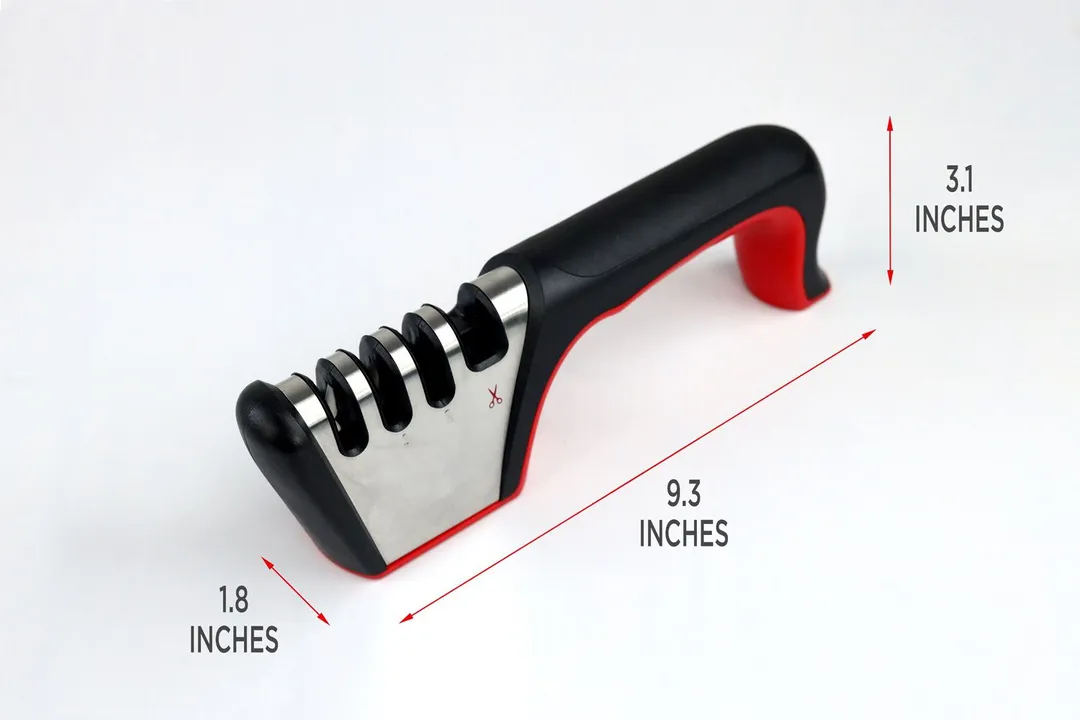
Build Quality
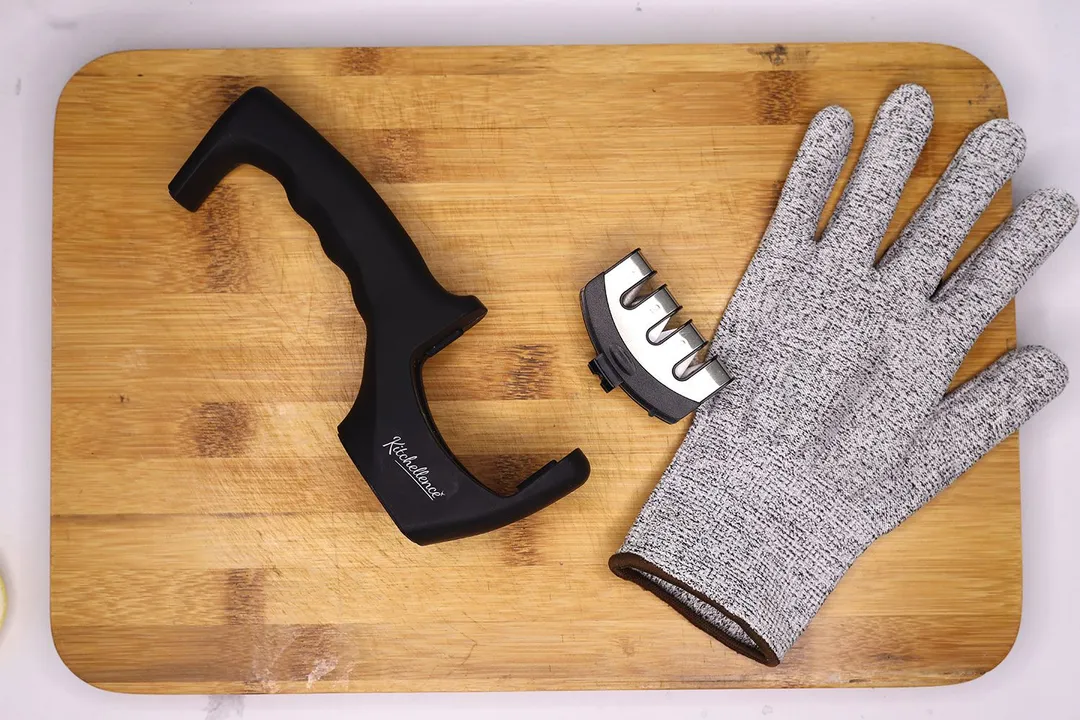
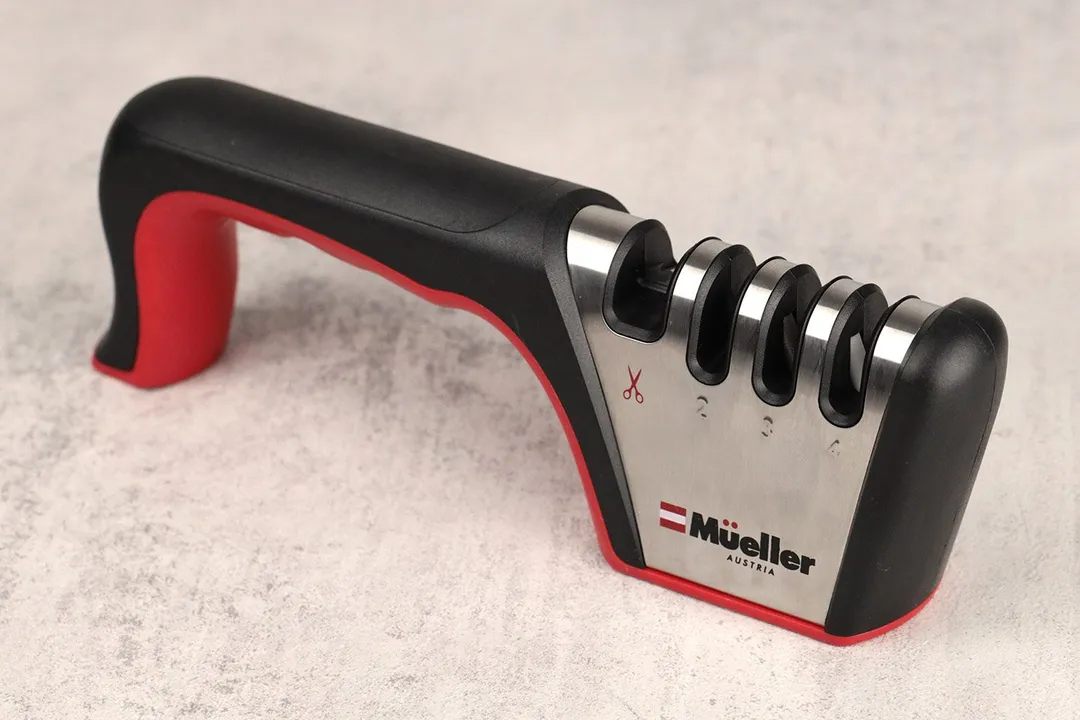
Working Section
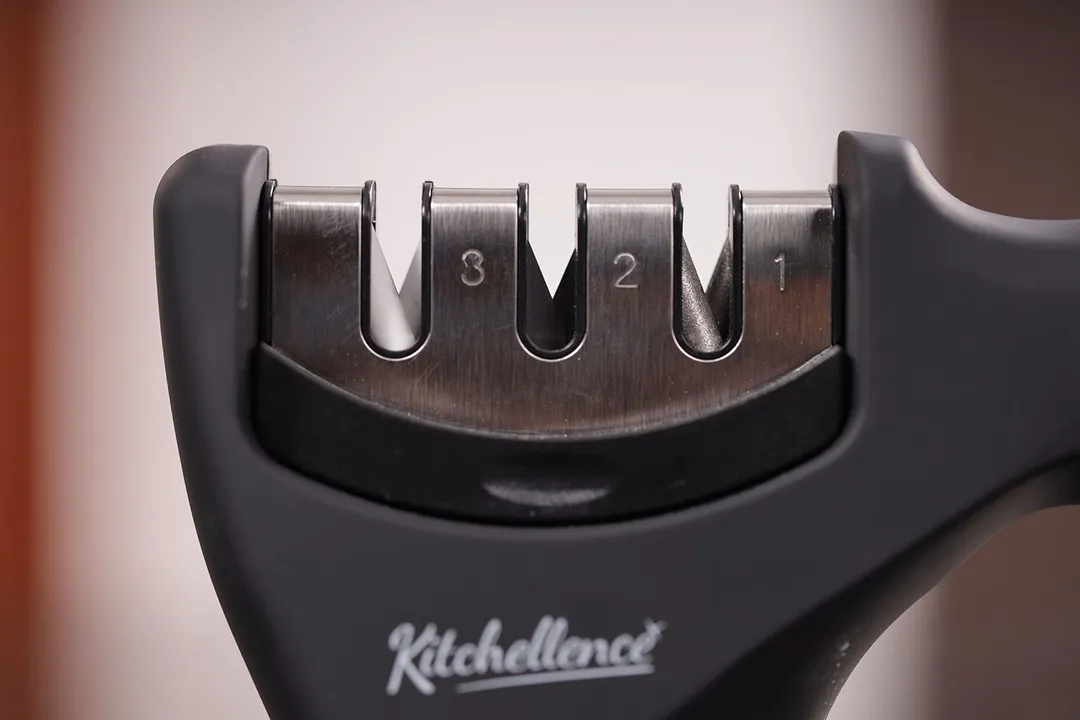
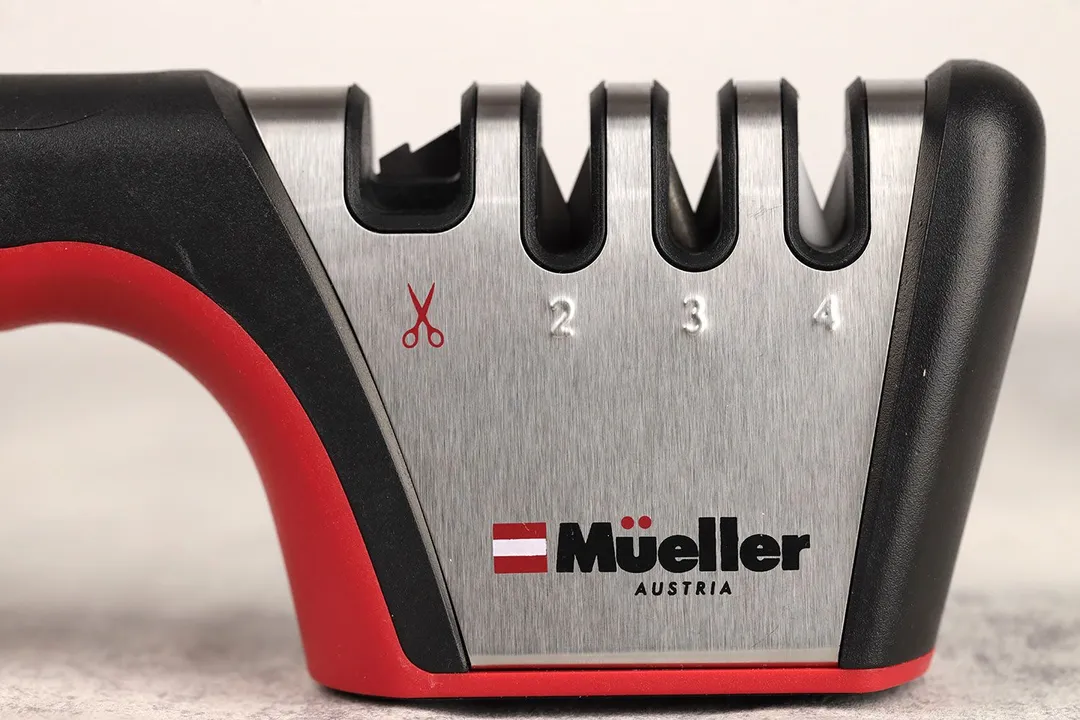
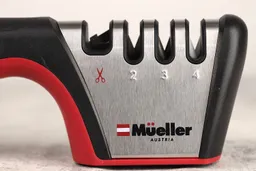
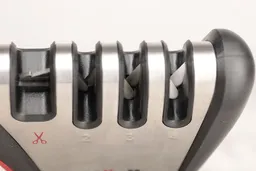
Base
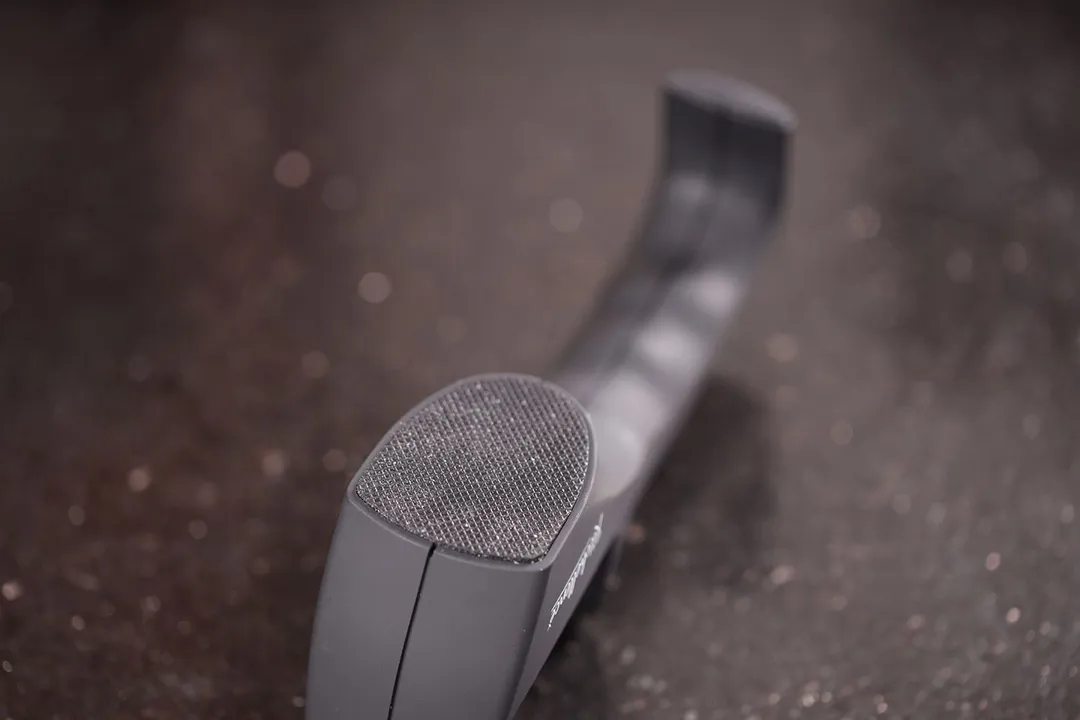

Grip

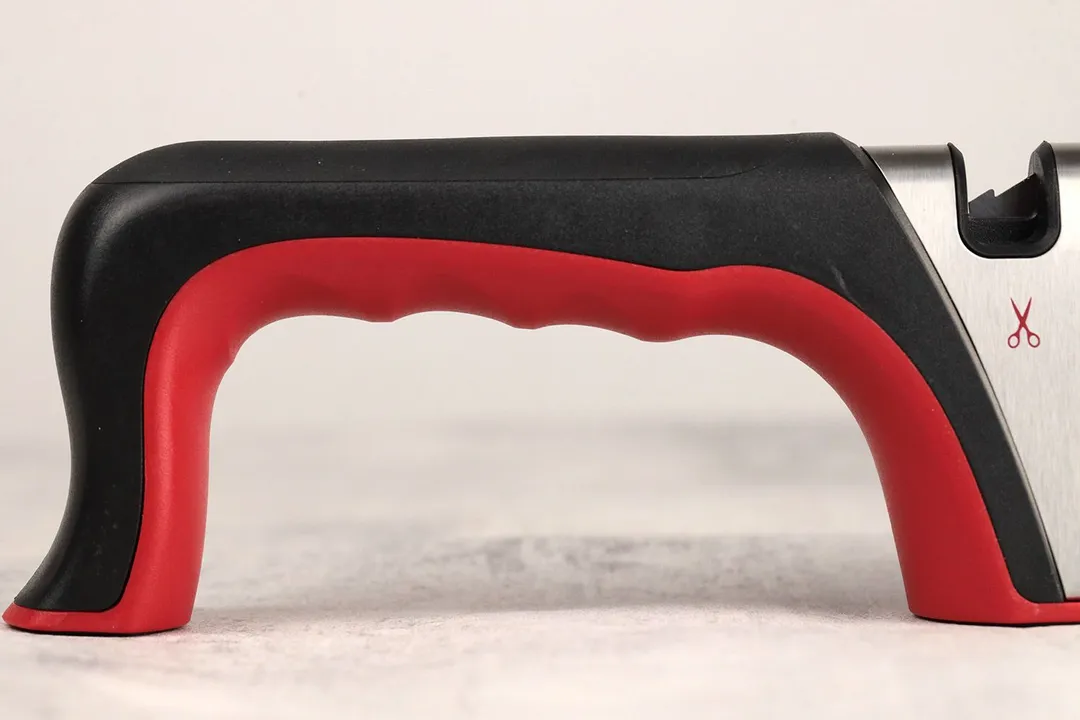
Usability
Slot Arrangement

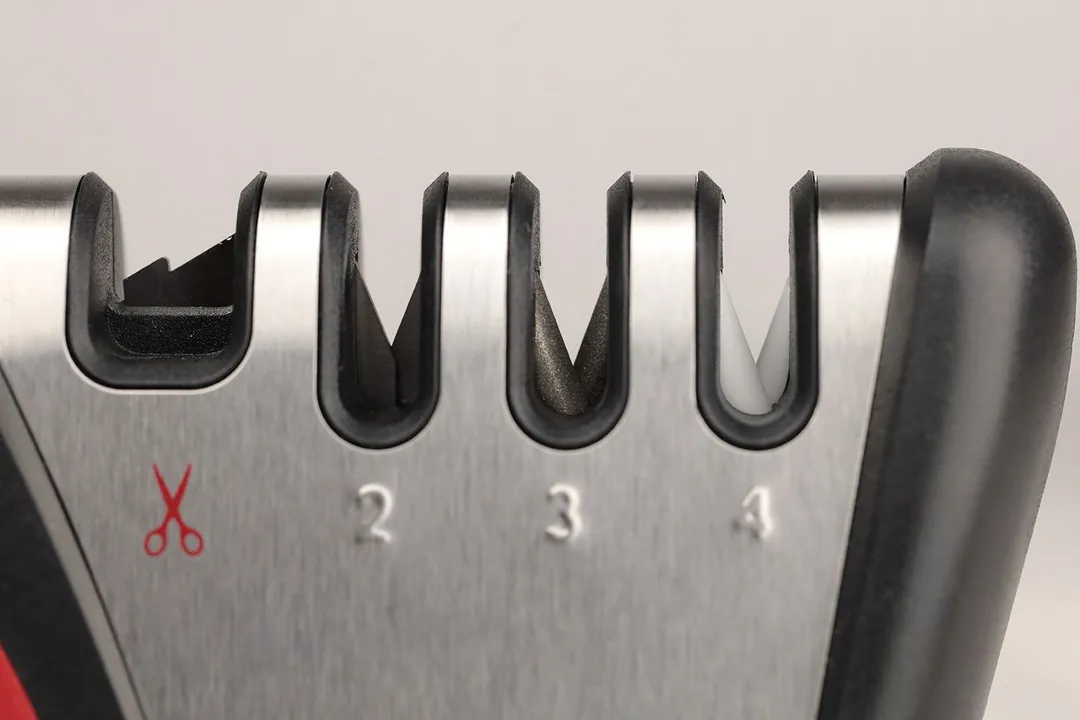
Insertion
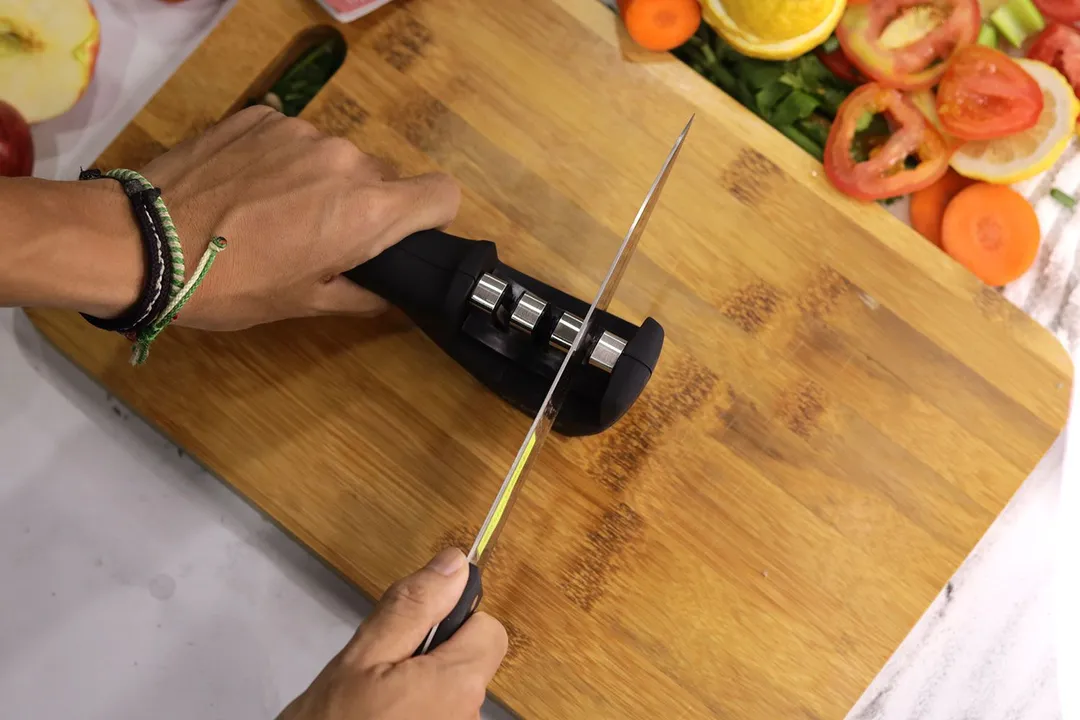
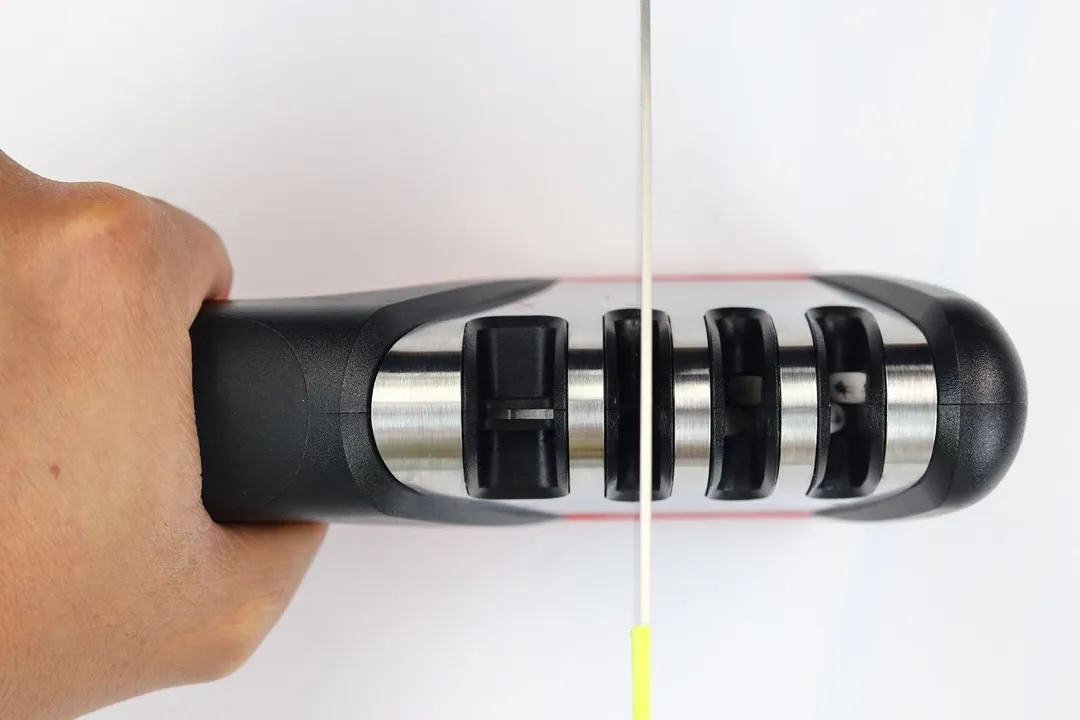
Pulling Through
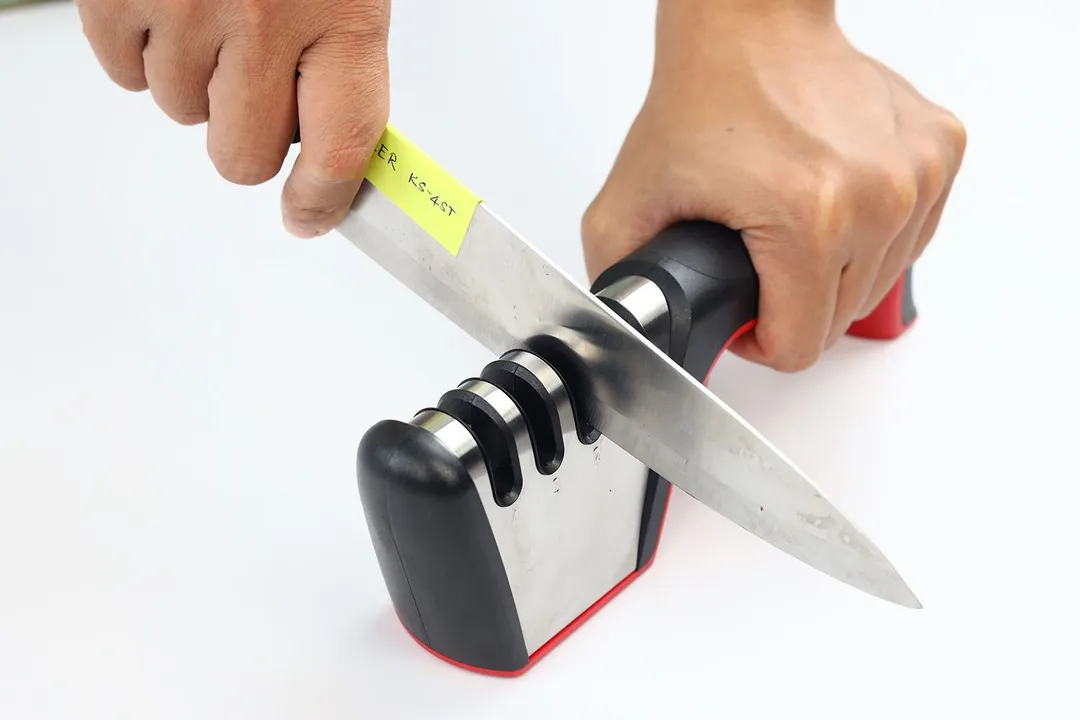
Stability on a Clean Surface

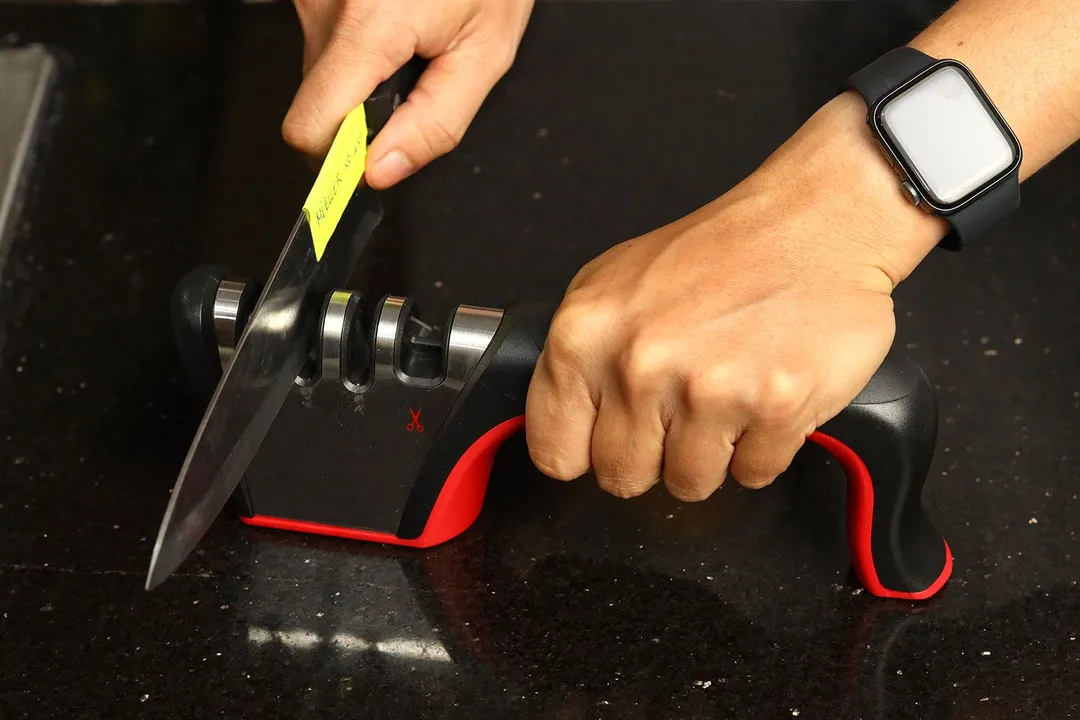
Stability on a Wet and Dirty Surface


Behind the Comparison
Anh Ngo is a writer with 9 years experience at different media outlets, covering from public news and events to product testing and analysis. At HealthyKitchen101, she works across different departments, communicating closely with its network of writers, editors, and health, tech, and search engine experts to provide a meaningful and pleasant reading experience for visitors.
Lap is Head of the Research, Testing, and Review Team (RTR Team) at HealthyKitchen101.com, where he directs and supervises the testing of kitchen gadgets and appliances.
Nguyen Ntk is a graphic designer, photographer, and videographer whose philosophy centers around respecting and celebrating the beauty of reality. Through his lenses, Nguyen strives to capture the true essence of objects and events, showcasing and highlighting authentic features without distortion or exaggeration.



